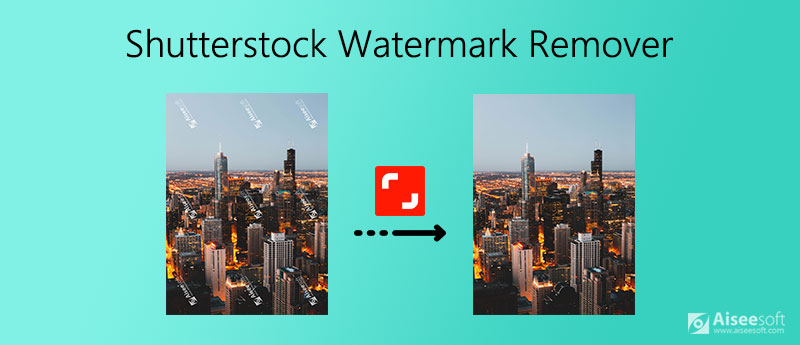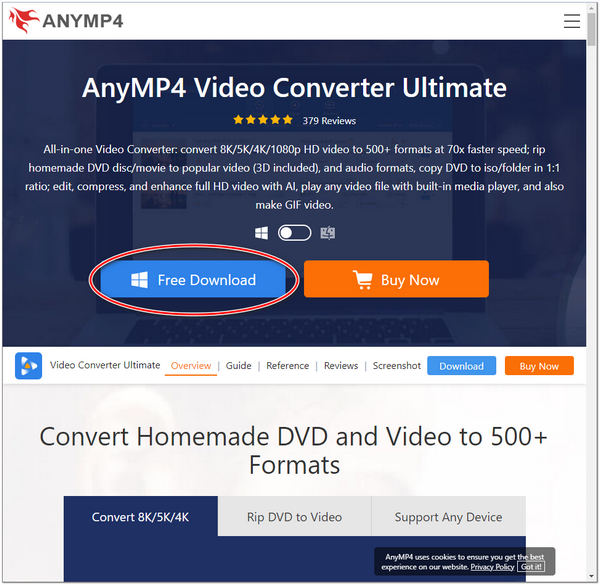If you’ve ever come across a stunning Shutterstock video but found it watermarked, you might wonder how to access the full, clean version. Watermarks are there to protect the creator’s rights, but sometimes you need to remove them for personal projects, presentations, or creative edits. In this post, we’ll explore some effective and legal methods to remove watermarks from Shutterstock videos easily, ensuring you can use your favorite footage smoothly. Remember, always respect copyright laws and use videos ethically. Now, let’s dive into why those watermarks are there and how you might handle them.
Understanding Why Watermarks Are Placed on Shutterstock Videos

Watermarks on Shutterstock videos serve a very important purpose—they protect the intellectual property of content creators and the platform itself. When you browse Shutterstock, you’ll notice those prominent watermarks—usually a logo or semi-transparent overlay—on preview videos. These watermarks ensure that only paying customers can access the full, unmarked version.
Think of watermarks as a digital “proof of ownership.” They prevent unauthorized use or distribution of the footage, encouraging users to purchase a license if they want to use the video without the watermark. This system benefits both creators, who get compensated for their work, and the platform, which maintains a vast library of high-quality content.
But why do people want to remove watermarks? Well, sometimes you might have downloaded a preview clip for evaluation, or perhaps you’re working on a project that requires a clean, professional look. While it’s tempting to find quick fixes online, it’s crucial to remember that removing watermarks without permission is often against copyright laws and Shutterstock‘s terms of service.
Instead of trying to bypass these protections illegally, consider these options:
- Purchase the appropriate license to access the original, unwatermarked video legally.
- Use Shutterstock’s download options for the full-quality, watermark-free version after payment.
- Contact the content creator or Shutterstock support if you have special needs or questions about licensing.
Understanding the purpose behind watermarks helps clarify why they exist and encourages ethical practices when working with stock footage. If you’re interested in learning legitimate ways to access watermark-free videos, stay tuned for our upcoming tips and methods!
Legal Considerations When Removing Watermarks

Before diving into the world of watermark removal, it’s super important to understand the legal landscape surrounding this practice. Watermarks are more than just pesky overlays—they’re a clear sign of ownership and copyright protection. When a creator or company puts a watermark on their video, it’s usually to prevent unauthorized use and to ensure they get credit for their work.
Removing watermarks without permission can lead to serious legal trouble, including copyright infringement claims, fines, and even lawsuits. So, if you’re considering removing a watermark from a Shutterstock video, ask yourself:
- Do I have the rights or permission to use this video?
- Am I the owner of the video, or have I purchased the necessary license?
- Is my intended use covered under fair use or other legal exceptions?
Most stock footage, including Shutterstock videos, are licensed either as royalty-free or rights-managed. These licenses often come with restrictions on how you can modify or use the content. Removing watermarks typically violates the licensing agreement unless you have purchased the full, watermark-free version or have explicit permission from the owner.
Remember, ethical use is crucial. If you genuinely need a watermark-free video, the best route is to buy the appropriate license or contact the content creator. Many creators and companies are happy to provide clean versions for a fee, which supports their work and keeps you on the right side of the law.
In summary, always respect intellectual property rights. Removing watermarks without permission can jeopardize your legal standing and damage your reputation. When in doubt, consult with a legal expert or seek proper licensing channels—it’s better to be safe than sorry!
Tools and Software for Watermark Removal
If you’ve got the legal right to remove a watermark and just need to do so efficiently, there are plenty of tools and software options out there to help. Some are free, while others come with premium features. Let’s explore some of the most popular and reliable options:
Manual Editing Software
- Adobe Premiere Pro: A professional-grade video editing tool that allows you to crop, blur, or overlay parts of the video to hide watermarks. It requires some skill but offers precise control.
- DaVinci Resolve: Free and powerful, this software can help you carefully remove or obscure watermarks with masking and color correction techniques.
Specialized Watermark Removal Tools
- HitPaw Watermark Remover: Designed specifically to eliminate watermarks from videos and images with just a few clicks. It’s user-friendly and effective for simple watermarks.
- Video Eraser: Available on mobile devices, this app helps you quickly remove watermarks on the go by cropping or blurring the watermark area.
Online Watermark Removal Services
| Tool | Features | Notes |
|---|---|---|
| Apowersoft Online Watermark Remover | Remove watermarks from videos and images directly in your browser | Easy to use, but results depend on watermark complexity |
| Remove Logo Now! | Automatically detects and removes logos and watermarks | Best for straightforward watermarks; may require some manual adjustments |
Tips for Effective Watermark Removal
- Choose the right tool based on the complexity of the watermark and your skill level.
- Always work on a copy of the original video to avoid accidental data loss.
- Use masking or cropping techniques carefully to avoid ruining the video’s quality or composition.
- Be patient—sometimes, combining multiple methods yields the best results.
Remember, for best results and to stay within legal boundaries, always ensure you have the right to remove watermarks from any content. Using these tools responsibly can help you achieve a clean, professional-looking video without damaging your reputation or risking legal issues.
Step-by-Step Guide to Remove Watermarks from Shutterstock Videos
If you’ve ever needed to remove a watermark from a Shutterstock video, you know it can seem like a daunting task. But with the right tools and a bit of patience, it’s totally doable. Here’s a straightforward step-by-step guide to help you get started:
Step 1: Choose the Right Video Editing Software
First things first, pick a reliable video editing or watermark removal tool. Some popular options include Adobe Premiere Pro, HitPaw Watermark Remover, or HitFilm Express. For simpler edits, online tools like Apowersoft Online Watermark Remover can also do the trick. Make sure the software you select supports the video format you’re working with.
Step 2: Import Your Video
Open your chosen software and import the Shutterstock video with the watermark. Usually, this is as simple as dragging and dropping the file into the editor or using the import menu.
Step 3: Locate the Watermark
Play the video and identify the exact location of the watermark. Take note of its position, size, and duration if it appears only at certain times. This information will help you plan your removal strategy.
Step 4: Apply Watermark Removal Tools
Most software offers specific tools to erase watermarks:
- Cloning or Healing Tools: These allow you to paint over the watermark by copying nearby pixels, blending it seamlessly into the background.
- Cropping: If the watermark is at the edge, cropping the video might be an option, though it could cut out important parts.
- Masking and Blurring: You can mask the watermark area and apply a blur effect to make it less noticeable.
Use these tools carefully to avoid leaving obvious traces.
Step 5: Fine-Tune the Editing
After removing the watermark, scrub through the video to ensure the edit looks natural. Adjust the blending, color correction, or other settings as needed to maintain a consistent appearance.
Step 6: Export the Final Video
Once satisfied with the edits, export your video in the desired format. Make sure to choose high-quality settings to keep your video looking sharp and professional.
Tips for Maintaining Video Quality During Watermark Removal
Removing watermarks can sometimes lead to a loss in quality or unwanted artifacts if not done carefully. Here are some expert tips to help you preserve your video’s quality:
- Use High-Resolution Originals: Always start with the highest quality version of the video. Higher resolution footage provides more detail, making it easier to remove watermarks without degrading the overall quality.
- Choose the Right Tool: Opt for software that offers advanced editing features like content-aware fill, cloning, and seamless blending. These tools help you remove watermarks more naturally.
- Work in Small Sections: Instead of trying to remove the watermark in one go, work on small segments. This allows for more precise edits and reduces the risk of damaging the video quality.
- Avoid Over-Editing: Excessive blurring or cropping can lead to a loss of detail. Use minimal adjustments necessary to hide or remove the watermark.
- Maintain Consistent Lighting and Color: After removal, match the surrounding pixels for consistent lighting and color. This prevents the edited area from standing out.
- Preview Before Finalizing: Regularly review your edits in full quality mode. This helps you catch any artifacts or inconsistencies early on.
- Use Noise Reduction and Sharpening: After removing the watermark, applying gentle noise reduction and sharpening can restore some of the video’s original crispness.
Remember, patience is key. Taking your time to make careful edits ensures your final video looks professional and polished, even after watermark removal. With the right approach, you can effectively clean up your videos without sacrificing quality, making them ready for your project or presentation.
Alternative Solutions for Accessing Shutterstock Videos Legally
If you’re looking to use high-quality videos without the hassle of removing watermarks, the best approach is to access videos legally and ethically. Shutterstock offers several options to help you do just that, ensuring you’re compliant with licensing agreements and avoiding potential legal issues.
Here are some legitimate ways to access Shutterstock videos:
- Purchase a License: The most straightforward method is to buy the appropriate license for the video you need. Shutterstock offers different licensing options—Standard and Enhanced—depending on your usage requirements. Once purchased, you’ll get a watermark-free, high-resolution version of the video.
- Subscribe to a Plan: If you frequently need videos, consider subscribing to Shutterstock’s plans. These subscriptions grant access to a set number of downloads per month or year, often at a more economical rate. Subscribers receive videos without watermarks once downloaded legally.
- Use Free Alternatives: There are stock video platforms that offer free videos with Creative Commons licenses or in the public domain. Websites like Pexels, Unsplash, and Pixabay provide high-quality videos that can be used freely, often without attribution.
- Request Permission or Custom Content: If you have a specific video in mind, reaching out directly to content creators or Shutterstock’s licensing team can sometimes lead to custom licensing options or permissions that suit your needs.
Remember, attempting to remove watermarks from Shutterstock videos without purchasing or licensing them is not only unethical but also illegal. Supporting content creators and licensing agencies ensures that high-quality content continues to be produced and available for everyone legally and fairly.
Conclusion and Best Practices for Video Use
Using videos responsibly and legally is crucial in today’s digital landscape. Whether you’re creating content for your business, personal projects, or educational purposes, respecting copyright laws and licensing agreements helps maintain the integrity of your work and shields you from legal trouble.
Here are some best practices to keep in mind when using videos:
| Best Practice | Why It Matters |
|---|---|
| Always obtain proper licenses or permissions | Ensures legal use and supports content creators |
| Use videos from reputable sources | Reduces the risk of copyright infringement and quality issues |
| Read and understand licensing agreements | Clarifies usage rights and restrictions |
| Avoid unauthorized watermark removal | Maintains ethical standards and legal compliance |
| Consider free or royalty-free options when suitable | Cost-effective and legally safe for many projects |
In summary, while tools and methods to remove watermarks might seem tempting, they often come with legal and ethical pitfalls. The best approach is to access high-quality videos through legitimate channels, respecting the hard work of content creators. This not only keeps your projects safe from legal issues but also supports a healthy ecosystem of digital content creation.
Remember, investing in licensed content pays off in the long run, providing peace of mind and professional quality for your projects. Happy creating!


